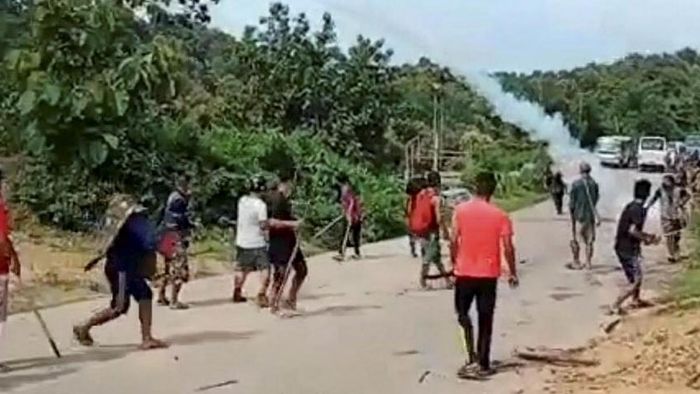Assam's border Clash with other NE states left 157 dead
The clashes over border disputes between Assam on one hand and Arunachal Pradesh, Meghalaya, Mizoram, and Nagaland, on the other, have led to the death of at least 157 persons, reveals a report by the Rights and Risks Analysis Group (RRAG).

- Aug 10, 2021,
- Updated Aug 10, 2021, 9:45 PM IST
GUWAHATI: The clashes over border disputes between Assam on one hand and Arunachal Pradesh, Meghalaya, Mizoram, and Nagaland, on the other, have led to the death of at least 157 persons, reveals a report by the Rights and Risks Analysis Group (RRAG).
The report, “Border disputed in the Northeast- The Raging War Within”, has further stated that a total of 65, 729 people have been displaced in border conflict between Assam and other states from 1979 to 2021(July 26).
“The victims are citizens of India and the increasing human toll warrants permanent peace building measures”- stated Suhas Chakma, Direct of RRAG, in his letter to the Union Home Minister Amit Shah and Chief Ministers of Assam, Arunachal Pradesh, Meghalaya, Mizoram, and Nagaland.
Out of the 157 reported deaths, the maximum number of deaths took place in the Assam-Nagaland border dispute with 136 deaths, followed by the Assam-Arunachal Pradesh border dispute with 10 deaths, the Assam-Mizoram border dispute with 7 deaths, and the Assam-Meghalaya border dispute with 4 deaths.
ALSO READ: Bodies Of Lovers Found Hanging From Tree In Maharashtra
Out of the 361 persons injured, the maximum number of people was reported from the Assam-Nagaland border dispute with 184 persons, followed by the Assam-Mizoram border dispute with injuries to 143 persons. The Assam-Meghalaya border dispute has also left 18 persons injured and in the Assam Arunachal Pradesh border dispute 16 persons were injured.
The border dispute between Assam and Mizoram mainly intensified in 2018 and the injuries to 143 persons indicate the intensity of the clashes stated the report.
“The states usually approach the Supreme Court to resolve the disputes but the demarcation of boundaries is an executive task. Therefore, the Supreme Court usually recommended formation of the boundary commissions. However, if any of the states does not accept the recommendations of the Boundary Commissions including those appointed by the Supreme Court, little progress can be made.”- further stated Mr Chakma.
In the past, the recommendations of the Boundary Commissions have been consistently rejected. On the Assam-Meghalaya border dispute, Meghalaya had rejected the recommendations of Justice YV Chadrachud Committee which had awarded Langpih to Assam while Assam had accepted the recommendations. But, Assam itself had rejected the recommendations of the three member Boundary Commission appointed by the Supreme Court on the Assam-Arunachal Pradesh border dispute.
ALSO READ: Uttar Pradesh govt withdraws re-inquiry against Dr Kafeel Khan
The Commission in its 2014 report recommended the transfer of around 70-80 percent of the disputed land to Arunachal Pradesh. The Centre had also constituted two boundary commissions i.e. the Sundaram Commission (1971) and the Shastri Commission (1985) to settle the Assam-Nagaland border disputes but both the states rejected the recommendations of these two committees.
“The issue has never been the absence of technology and expertise to draw the boundaries of the States but the absence of political will. Satellite mapping to demarcate boundaries and settle such disputes as being suggested by the Ministry of Home Affairs cannot manufacture the political will over claims on territories based on borders drawn by the colonial British as early as 1835 i.e. about 186 years ago.” –also stated Mr Chakma.
Asking the Chief Ministers to give up one-upmanship, the Rights and Risks Analysis Group (RRAG) recommended to the Ministry of Home Affairs and the State governments to maintain the status quo till final resolution of the boundary disputes.